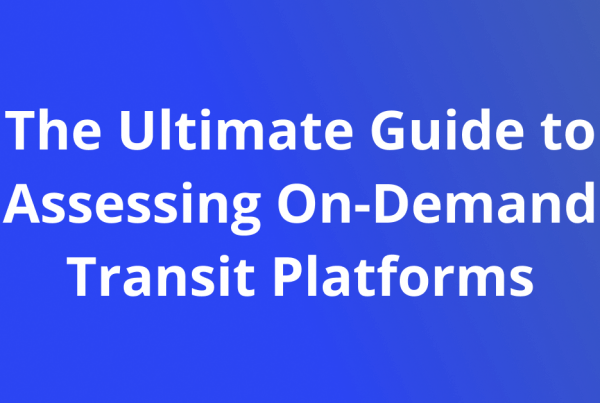In our last post, we detailed how challenges of on-demand bus service can be improved through the use of fleet management software. Balancing cost and customer service in public transit is a universal predicament in the industry, but new developments are being made around the world to help resolve this dilemma. Specifically, Pantonium’s transportation management system allows for a hybrid of fixed and on-demand scheduling, that offers several benefits to local transit authorities looking to improve the performance and cost of transit in their areas.
The benefits of the hybrid bus service are as follows:
1) As many buses as possible can be assigned to the main arteries of the bus service transit routes during high demand peak hours. This should satisfy the vast majority of riders to be transported along the main arteries during their commute.
2) The bus service can be on-demand for the parts of the town not in need of regular bus scheduling. The result is still better than traditional scheduled bus service to the areas, as riders know when the bus will be coming. As well, ride-time is reduced because there is no need for the buses to service large, sparse populated areas to reduce cost when there is no demand.
3) The bus service will be better for environmental resources because buses will run as close as possible to capacity as the service-level compliance allows. There will no longer be empty buses running on their routes.
4) Bus drivers do not need to be on the road when they are not needed.
5) Service levels can be monitored so the service is always available, yet not requiring empty or mostly empty buses to be operating on the road when there is no demand.
6) The bus company can do extensive analysis over time to make the service more efficient, more effective, etc. When new vehicles are needed, the company can plan for the best capacity and the right proportion of larger and smaller buses for different uses.
7) The normal bus service and transit for special needs (wheelchair-bound riders, for example), can all be handled and operated as one fleet.
8) Fee structures can be set up in different ways: premium services with lower ride-time; potential higher ride-time for a reduced fee; passengers with special needs can be grouped together and scheduled together; riders- can provide tolerance for the ride-time for the fee-structure, etc.
9) Buses already in a fleet can be used to leverage the Pantonium system with a tablet stand, allowing the driver to determine their next point. Safety is uncompromised because the system does not change the next stopping point for any bus on the move. This means once departed for a destination, the driver does not need to check on the tablet again until the next point is reached.
With the hybrid fixed and on-demand scheduling model, the Pantonium system can run the on-demand portion of the bus service. The fixed portion would mimic the current bus service schedule whereby buses sent to the main routes during peak times are basically endless loops for those periods of time. These buses would not require anything more than the resources being operated at the moment.
The Pantonium system can also be used to run a purely on-demand bus service. This type of service could becomes very attractive if the bus service area is large with sparse population, when the buses can be stationed in different points of the area to significantly improve the ETA for riders. The waiting points can be adjusted on occasion, or even during the day to cut down on fuel consumption.
With Pantonium’s optimization service and its administrative abilities (explained in other whitepapers), it is possible to run a rural or semi-rural region with efficiency and still maintain a very high service level in terms of ride-time and responsiveness. The optimization system will always choose the most effective way to provide rides to the riders, even if the fleet of vehicles is not adequate for the service level set up by the operators of the bus services. This is important when the population increases or an unexpected number of rides materializes without warning. This way, the fleet of vehicles always remains operating for peak performance and resource-effectiveness, providing optimum service for your customers while keeping service costs to a minimum.
The Pantonium promise is to provide software solutions which will always work to provide the best possible use of your vehicle fleet. For more information on how Pantonium’s fleet management software helps to improve transportation management systems, email us at info@pantonium.com or tour our platform here.



